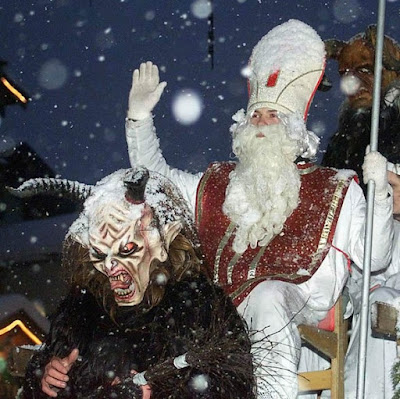Merry Christmas Eve Eve...and today is also Festivus. In case you haven't heard of Festivus, or if you're not a huge Seinfeld fan like me, here's a little bit about it...
"Happy Festivus" is the traditional greeting of Festivus, a holiday featured in the Season 9 episode of Seinfeld named "The Strike", which first aired on December 18, 1997. Since then, many people have been inspired by this zany, offbeat Seinfeld holiday and now celebrate Festivus as any other holiday.
According to the Seinfeld model, Festivus is celebrated on December 23rd. However many people celebrate it other times in December and even at other times throughout the year.
The slogan of Festivus is "A Festivus for the rest of us!" The usual holiday tradition of a tree is manifested in an unadorned aluminum pole, which is in direct contrast to normal holiday materialism. Those attending Festivus may also participate in the "Airing of Grievances" which is an opportunity to tell others how they have disappointed you in the past year, followed by a Festivus dinner, and then completed by the "Feats of Strength" where the head of the household must be pinned. All of these traditions are based upon the events in the Seinfeld episode, Strangely enough, our Festivus traditions also have roots that pre-date Seinfeld, as it began in the household of Dan O'Keefe, a television writer who is credited for writing the Seinfeld episode. Read more here: http://festivusweb.com/
According to the Seinfeld model, Festivus is celebrated on December 23rd. However many people celebrate it other times in December and even at other times throughout the year.
The slogan of Festivus is "A Festivus for the rest of us!" The usual holiday tradition of a tree is manifested in an unadorned aluminum pole, which is in direct contrast to normal holiday materialism. Those attending Festivus may also participate in the "Airing of Grievances" which is an opportunity to tell others how they have disappointed you in the past year, followed by a Festivus dinner, and then completed by the "Feats of Strength" where the head of the household must be pinned. All of these traditions are based upon the events in the Seinfeld episode, Strangely enough, our Festivus traditions also have roots that pre-date Seinfeld, as it began in the household of Dan O'Keefe, a television writer who is credited for writing the Seinfeld episode. Read more here: http://festivusweb.com/
******
We were once again able to go see Nashville Ballet's Nutcracker thanks to my sons' music school. They get an allotment of tickets every year from the Tennessee Performing Arts Center (TPAC) for families with kids who attend the school. It's such a wonderful performance. The Nutcracker has always been one of my favorite Christmas stories. It never gets old. The music is so wonderful and I love the magical story. This is a picture of me and my son, Reece after the show.
******
If you haven't already heard about the Netflix original movie, The Christmas Chronicles, I would be surprised. Seems like it has been one of the most buzzed about holiday movies this season. Reece and I finally watched it last night and it was wonderful. It's a family affair with Kurt Russell as Santa, Goldie Hawn as Mrs. Claus (a brief appearance) and Oliver Hudson, Goldie's son and Russell's stepson (also a brief appearance). The story has a sad element, but its themes are keeping the Christmas spirit and believing in yourself. Plus, it's funny and very entertaining. It's sure to be another movie people will be watching at Christmas for years to come. I know we will. Oh, and I forgot to mention the adorable elves. Judge for yourself...
Always in spirit...


































